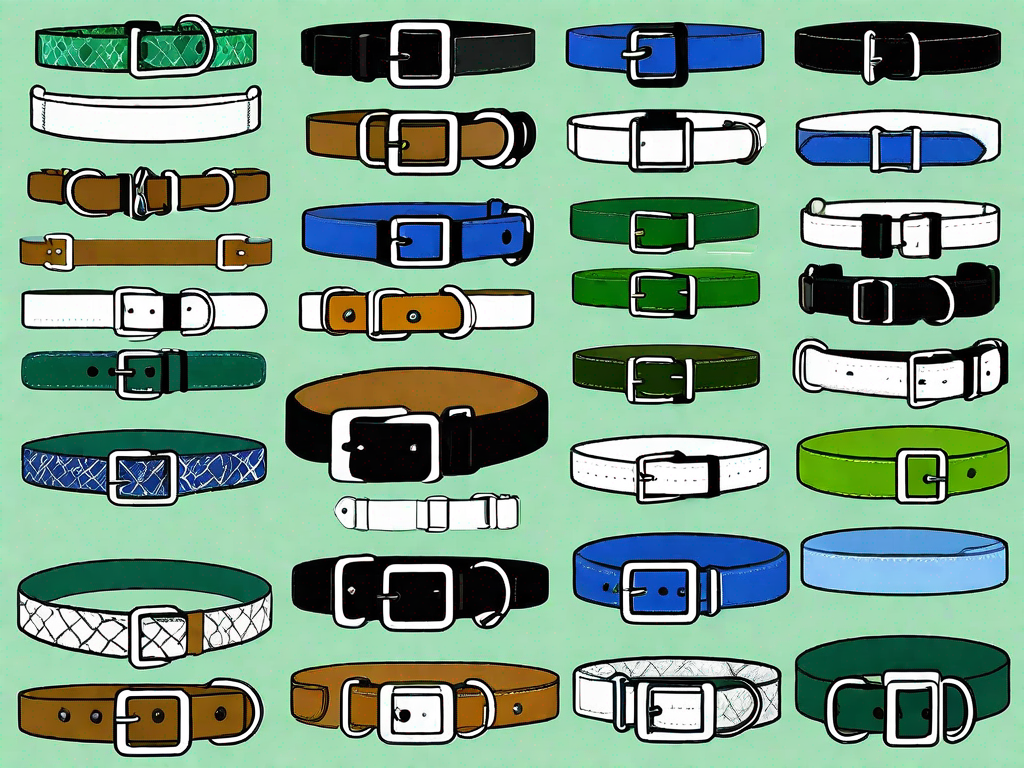Are you struggling to train your furry friend? Look no further! Dog training collars can be incredibly effective tools to help you communicate with your canine companion and achieve desired behaviors. In this buyer’s guide, we will explore the different types of training collars and key features to consider when making a purchase. We’ll also provide you with a list of top-rated collars and address safety considerations and frequently asked questions. By the end, you’ll be well-equipped to find the most effective dog training collar for your needs.
Understanding Dog Training Collars
When it comes to training your furry friend, dog training collars can be a valuable tool. These collars are specifically designed to aid in teaching your dog basic commands, correcting unwanted behaviors, or enhancing advanced training techniques. By using the collar correctly, you can effectively communicate with your dog and reinforce positive behaviors.
The Purpose of Dog Training Collars
Before delving into the different types of training collars, it’s important to understand their purpose. Training collars serve as a means of communication between you and your dog. They provide a way to give your dog clear signals and cues, helping them understand what is expected of them. Whether you’re teaching them to sit, stay, or walk on a leash without pulling, a training collar can be a helpful tool in achieving these goals.
Training collars are not meant to be used as a form of punishment. Instead, they are intended to redirect your dog’s attention and guide them towards the desired behavior. When used correctly, these collars can be a humane and effective way to train your dog.
Types of Dog Training Collars
There are several types of dog training collars available in the market, each with its own unique features and benefits. Let’s explore some of the most common types:
- Flat Collars: These are the standard collars that attach around your dog’s neck. While they are not specifically designed for training purposes, they can still be used for basic commands and leash training. Flat collars are typically made of nylon or leather and come in various colors and designs.
- Martingale Collars: Martingale collars are ideal for dogs with necks larger than their heads, such as Greyhounds or Whippets. These collars consist of a wider loop that goes around the dog’s neck and a smaller loop that tightens when the dog pulls. They provide gentle control without choking.
- Prong Collars: Also known as pinch or spike collars, prong collars have metal prongs that apply pressure to your dog’s neck when they pull. These collars are designed to mimic the way a mother dog corrects her puppies by using gentle pressure on their necks.
- Choke Collars: Choke collars consist of a metal chain that tightens when your dog pulls. These collars are designed to provide a quick correction when your dog misbehaves or pulls on the leash.
- Shock Collars: Shock collars, also known as electronic collars or e-collars, deliver an electric stimulus to your dog’s neck via a remote control. These collars can be effective in certain training scenarios, but only when used responsibly and with proper training.
When using a flat collar for training, it’s important to ensure that it fits properly. The collar should be snug enough to prevent your dog from slipping out of it, but not too tight that it causes discomfort. Remember to regularly check the fit of the collar as your dog grows.
Martingale collars are designed to prevent dogs from slipping out of their collars, making them a great option for dogs who tend to back out of traditional flat collars. The gentle tightening action of the collar helps to discourage pulling without causing harm to your dog’s neck.
It’s important to note that prong collars should only be used under the guidance of a professional trainer. When used correctly, prong collars can be an effective tool for dogs that are strong pullers or have a tendency to be reactive. However, improper use of prong collars can cause harm and discomfort to your dog, so it’s crucial to seek professional advice before using one.
Like prong collars, choke collars should be used with caution and proper instructions. It’s essential to learn the correct way to use a choke collar to avoid causing harm to your dog. When used correctly, choke collars can be an effective tool for teaching your dog leash manners and discouraging pulling.
Shock collars should never be used as a form of punishment or to cause harm to your dog. They should only be used as a last resort when other training methods have been unsuccessful. It’s important to consult with a professional trainer who has experience with shock collar training before considering this option.
Remember, no matter which type of training collar you choose, it’s crucial to use it responsibly and with your dog’s well-being in mind. Always consult with a professional trainer if you have any questions or concerns about using a training collar.
Key Features to Look for in a Dog Training Collar
Range of the Collar
When considering a training collar, it’s essential to choose one with an appropriate range that matches your training needs. If you plan on using the collar outdoors or in large spaces, opt for a collar with a longer range to ensure effective communication with your dog.
Size and Comfort
A well-fitting and comfortable collar is crucial for your dog’s well-being during training sessions. Look for adjustable collars and ensure that the materials used are sturdy yet gentle on your dog’s skin. Remember, a good fit ensures both effective training and your dog’s comfort.
Battery Life and Charging
Consider the battery life and charging mechanism of the collar. You want a collar that can keep up with your training sessions without constantly needing to be recharged. Some collars have longer battery life and offer fast charging options, making them more convenient for daily use.
Top-Rated Dog Training Collars
High-End Collars for Professional Training
For those in pursuit of professional-grade training collars, the following options come highly recommended:
- Brand X: This top-rated collar offers advanced features such as multiple training modes and a wide range, making it a favorite among professional trainers.
- Brand Y: With its durable construction and precise stimulation levels, Brand Y is an excellent choice for trainers seeking reliability and versatility.
Affordable Collars for Basic Training
If you’re just starting with dog training or on a budget, these affordable options still provide reliable functionality:
- Brand Z: This collar offers a range of training modes, solid construction, and affordability, making it a popular choice for beginners and cost-conscious owners.
- Brand W: Known for its user-friendly design and effective training features, Brand W is an affordable collar without compromising on quality.
Safety Considerations When Using Dog Training Collars
Proper Usage of Training Collars
While training collars can be valuable tools, it’s crucial to use them responsibly. Always follow the manufacturer’s instructions and seek guidance from a professional trainer, if necessary. Avoid using excessive force and ensure that your dog is comfortable and not experiencing any form of distress.
Potential Risks and How to Avoid Them
Training collars, if misused, can pose risks to your dog’s well-being. Avoid leaving the collar on for extended periods and regularly check for any signs of irritation or discomfort. It is also important to phase out the use of training collars once your dog has successfully learned the desired behaviors, transitioning to positive reinforcement methods instead.
Frequently Asked Questions About Dog Training Collars
Are Training Collars Safe for All Dogs?
When used properly and with the appropriate settings, training collars can be safe for most dogs. However, it’s important to consider your dog’s age, size, and individual temperament before using a training collar. Some dogs may be more sensitive or reactive, requiring alternative training methods.
How Long Should a Dog Wear a Training Collar?
The duration for which a dog should wear a training collar depends on their training progress and specific needs. It is recommended to consult with a professional trainer who can guide you on the appropriate duration for your dog’s training collar usage, ensuring the well-being and effectiveness of training sessions.
By understanding the purpose of dog training collars, considering key features, and prioritizing safety, you can find the most effective collar for your furry companion. Remember, training collars are tools that should be used responsibly and in conjunction with positive reinforcement techniques. Happy training!


